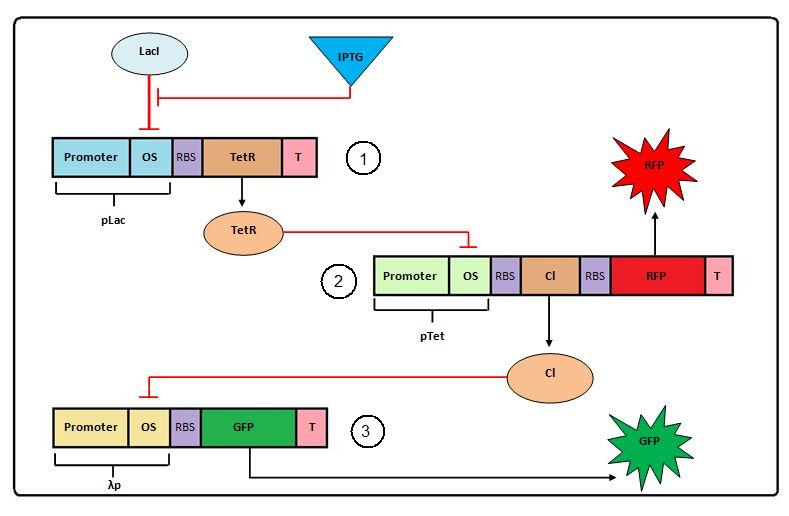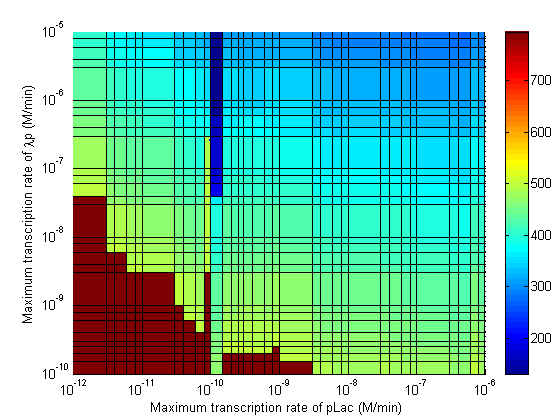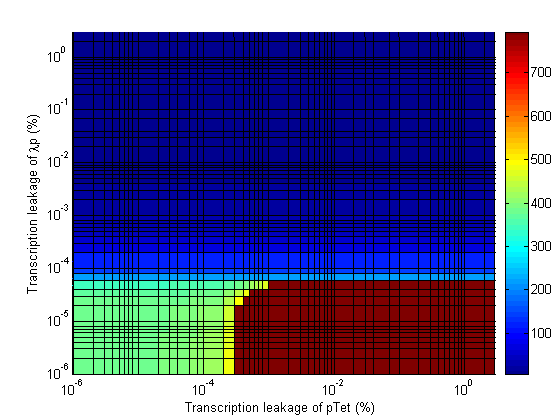Team:TUDelft/Modeling Cascade
From 2009.igem.org
Modeling the Transcriptional Cascade
A full description of the Transcriptional Cascade can be found here.
ODEs
The kinetic equations were written out in a Matlab script for both transcription and translation.
| Symbol | Definition |
| kIPTGin, kIPTGout | rate constants |
| k50IPTG, k50LacI, k50TetR, k50CI | dissociation constants |
| dmRNA | mRNA degradation rate |
| dTetR, dCI, dRFP, dGFP | protein degradation rates |
| apLac, apTet, aλp | transcription leakage (%) |
| cpLac, cpTet, cλp | maximum transcription rates |
| α1, α2, α3, α4 | translation rates |
| nIPTG, nLacI, nTetR, nCI | Hill coefficients |
| [X]mRNA | concentration of X mRNA |
Sensitivity
| Parameter | Normalized Sensitivity |
| kIPTGin, kIPTGout | |
| k50IPTG, k50LacI, k50TetR, k50CI | |
| dmRNA | |
| dTetR, dCI, dRFP, dGFP | |
| apLac, apTet, aλp | |
| cpLac, cpTet, cλp | |
| α1, α2, α3, α4 | |
| nIPTG, nLacI, nTetR, nCI | |
| [X]mRNA |
Parameter Sweeps
|
|
Stability
Jacobian
|
Design Recommendations
Based on the results of the simulations, a series of recommendations were given to the delay team to aid them in choosing parts which would maximize the delay time.
- Significant transcription leakages greatly shorten the delay time. Attempt to minimize leakages. Leakage of λp is a far bigger problem than pTet leakage.
- Use a weak promoter and a weak RBS on the last stage (λp) of the cascade.
- A weak pLac promoters is favorable.
- A strong pTet promoter is favorable.
- A strong RBS on CI gene is favorable.
- A weak RBS on TetR gene is favorable.
- A weak RBS on the endonuclease is favorable although a strong RBS can be used for the GFP gene.
- When choosing RBS and promoter strengths avoid the red areas on the stability plots.
 "
"

















